Tuscany is one of Italy’s most popular tourist destinations, and in this guide to the 15 must-see places in Tuscany, you’ll find out why.
This region in central Italy is known around the world for its bucolic landscapes, Renaissance cities, and world-class wine. Although often overlooked, Tuscany also has a desirable coastline with access to islands such as Elba and Montecristo.
Widely considered the birthplace of the Italian Renaissance, some of the must-see places in Tuscany for art and architecture include Florence, Siena, and Pisa. Each of these cities boasts architectural masterpieces, as well as a rich cultural heritage.
Beyond the cities, Tuscany’s beautiful countryside offers postcard-worthy scenery of vineyards, cypresses, olive groves, and medieval villages, such as San Gimignano and Montepulciano.
The region’s culinary heritage is equally captivating. Hearty meat stews and pecorino cheese are washed down with renowned wines like Chianti Classico and Brunello di Montalcino.
The Tuscan experience is rounded off by hiking through the UNESCO-listed landscapes of Val d’Orcia, soaking in Saturnia’s thermal springs, and relaxing on the beaches of Elba Island.
Jump to a section of this article
15 Must-See Places in Tuscany, Italy
Blending works of art, history, gastronomy, and natural beauty, Tuscany offers an authentic Italian experience. Let’s take a look at all the must-see places in Tuscany for rich history, delicious food, superb wine, and magnificent architecture.
1. Firenze (Florence)
Florence, the capital of Tuscany and a unique cultural hub, is a treasure trove of Renaissance art and engineering. The historic center is a designated UNESCO World Heritage Site showcasing examples of art and architecture that shaped the development of Western civilization and high culture.
Standing in the heart of Piazza del Duomo, the mighty dome of the Cathedral of Saint Mary of the Flower dominates Firenze’s skyline. Filippo Brunelleschi’s Duomo is accompanied by the Baptistery of Saint John and Giotto’s Campanile.
Visiting the buildings that make up the Florence Cathedral is a must for all first-time visitors. The nearby Basilica of Santa Croce is also worth visiting to see Giotto’s frescoes and the tombs of Galileo and Michelangelo.
Speaking of the iconic painter and sculptor, the Uffizi Galleries showcase works by Michelangelo, alongside Botticelli, Caravaggio, Raphael, and Leonardo da Vinci.
Moreover, Michelangelo’s David is the reason why pre-booking tickets to the Accademia Gallery is mandatory. But there’s much more to see. This museum also contains Bartolomeo Ammannati’s Four Allegories of the Medici and Giambologna’s Mercury.
Ponte Vecchio, one of the most romantic sights in Italy, links the historic center with Oltrarno on the south bank of the Arno River. During the medieval era, this was a commercial zone where butchers would sell fresh meat.
These days, it’s the domain for gold, leather, and jewelry stalls. Gold in Florence always carries a minimum of 18k, and prices are more competitive away from the bridge.
As the home of the powerful Medici family, Pitti Palace (Palazzo Pitti) with the stunning Boboli Gardens (Giardino di Boboli) is the perfect place to learn about the House of Medici.
Lying to the east, Piazzale Michelangelo allows one of the most picturesque sunsets in Florence. To avoid the crowds, head to the nearby Basilica San Miniato al Monte instead.
Beyond the sights, Florence offers a tantalizing food scene where trattorias serve the classic Bistecca alla Fiorentina. This thick-cut steak is traditionally served rare on the inside and well done on the exterior.
Romantic and steeped in cultural history, Florence is the quintessential starting point for exploring Tuscany. Due to its popularity, advance booking of all tickets and tours is essential to avoid disappointment.
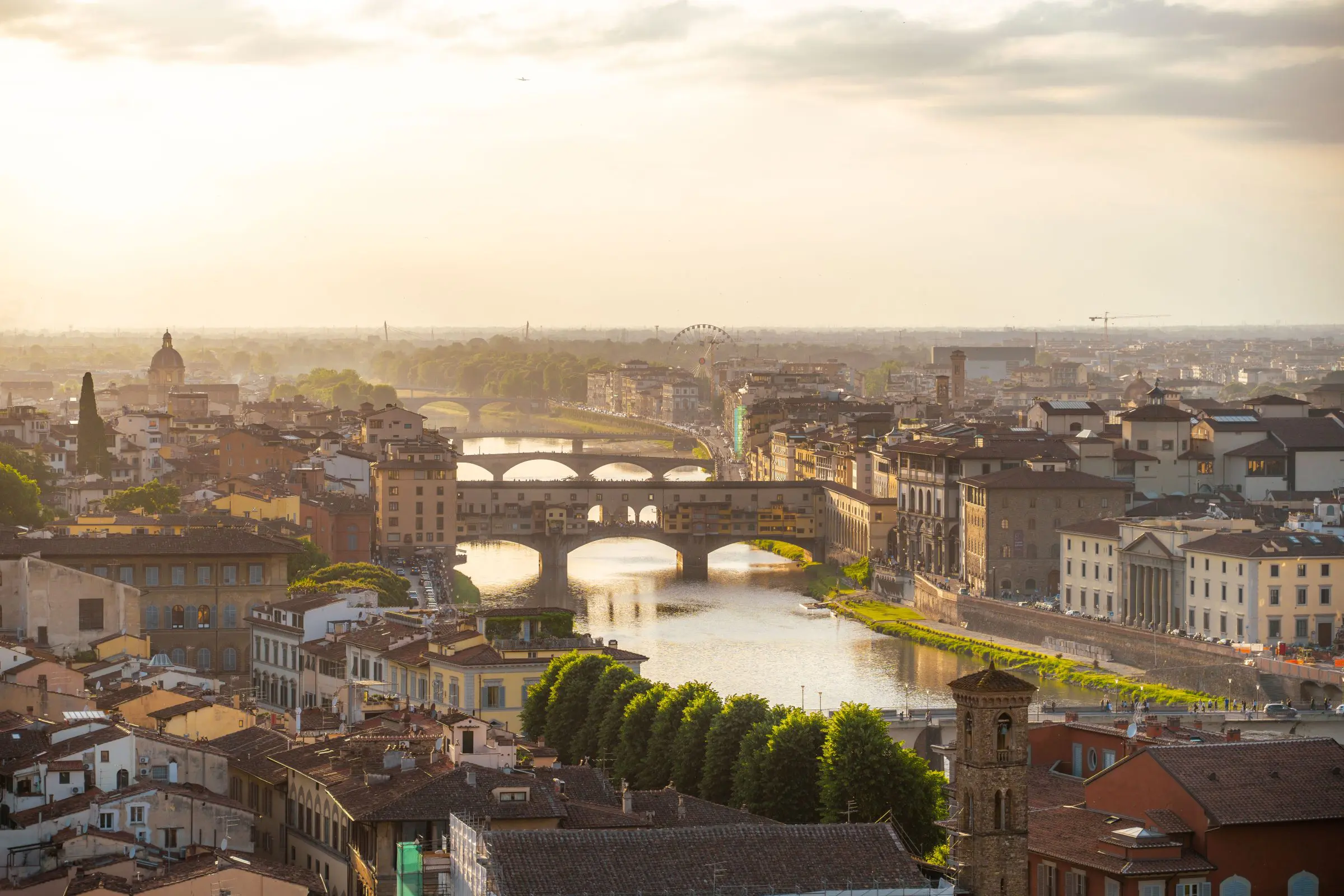
2. Chianti
The first of Tuscany’s three dominant wine regions, Chianti epitomizes Tuscany’s wine heritage and stands as one of Italy’s most famous viticultural zones.
This wine area between Florence and Siena is awash with scenic vineyards, olive groves, and picturesque towns and villages. Castellina in Chianti is one such settlement, with remarkable views afforded by the Rocca di Castellina in Chianti fortress.
Nearby, Via delle Volte is a covered walkway that serves as a welcome respite during Tuscany’s sizzling summers.
Sangiovese is the primary grape of this Tuscan wine region, although Canaiolo and Colorino are used in blends. Chianti DOCG is the entry-level wine, while Chianti Classico DOCG is the upgraded version most typically associated with the area.
Chianti Classico Riserva and Gran Selezione carry yet more structure and complexity. There are countless wineries open for tastings and vineyard tours, offering insight into the viticultural practices behind these medium-bodied wines.
Beyond the wine, Chianti has much potential for cyclists and photographers, thanks to its excellent infrastructure and postcard-perfect landscapes in all seasons. For wine lovers and those seeking a taste of rural Tuscany, Chianti is hard to beat. The region may be visited as a day trip from Florence and Siena.
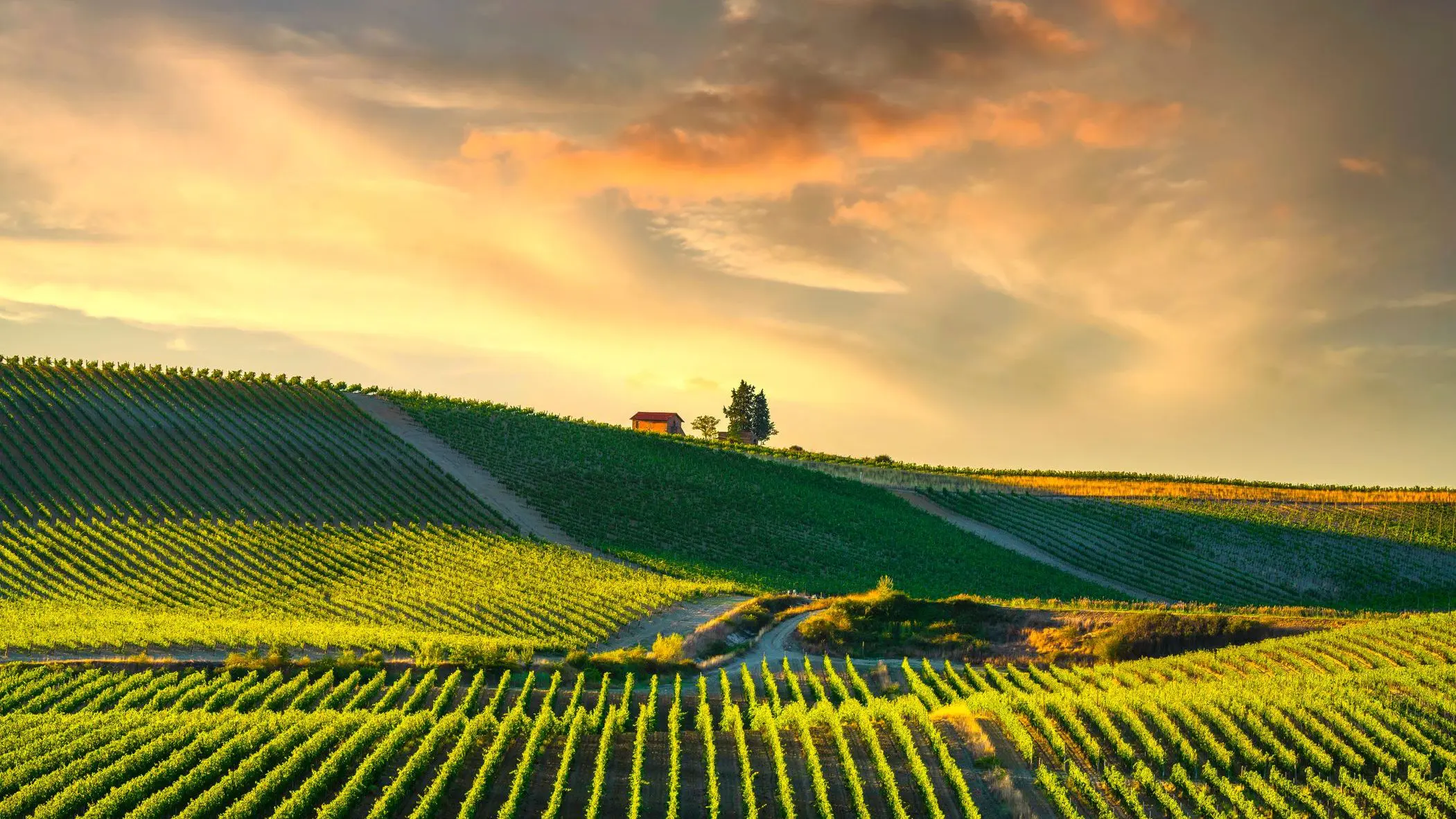
3. Pistoia
Located 25 miles northwest of the Tuscan capital, Pistoia offers a comparable experience of Renaissance beauty, yet with a fraction of the crowds Florence attracts.
Any trip to Pistoia should start in the medieval center, also known as Piazza del Duomo. Principal landmarks include the Cathedral of San Zeno, the Baptistery of San Giovanni, and the Palazzo dei Vescovi. This central plaza is encircled by equally elegant squares flanked by Romanesque architecture.
There is also the Ospedale del Ceppo, a former hospital now used as a museum dedicated to local and regional healthcare. The glazed terracotta frieze by Giovanni della Robbia depicting the Seven Works of Mercy is considered an unsung masterwork of Renaissance sculpture.
Art and architecture aside, Pistoia has cozy cafés and friendly trattorias serving regional eats. Piazza della Sala, a medieval marketplace, is the heart and soul of Pistoia’s dining scene.
As much as Florence is one of the must-see places in Tuscany, its quieter neighbor meets the needs of those seeking a more authentic urban experience.
Pistoia is small and compact enough to work as a day trip from Florence. For those seeking outdoor adventure, an overnight stay adds the prospect of hiking in the Pistoia Apennines.
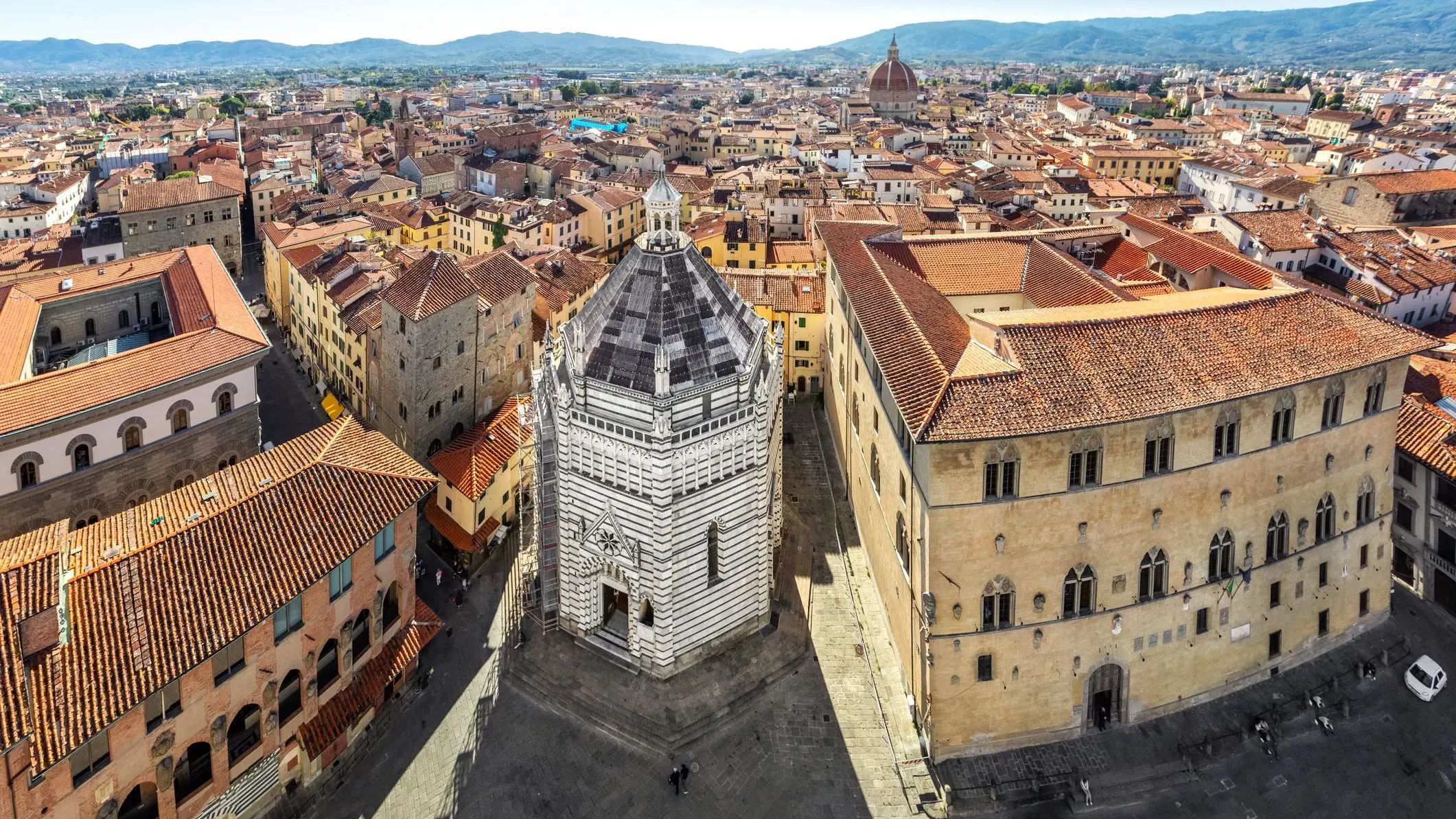
4. Val d’Orcia (Orcia Valley)
When you visualize the Tuscan countryside, it’s the stunning landscapes of Val d’Orcia that spring instantly to mind.
This quintessentially Tuscan rural area stands between the DOCG wine regions of Brunello di Montalcino and Vino Nobile di Montepulciano and is a designated UNESCO World Heritage Site where human culture coexists with the natural world.
The Orcia Valley is celebrated for its rolling hills, cypress-lined roads, and golden fields, which inspired Renaissance painters of the past and continue to kindle creativity in travelers.
Flecked with medieval villages such as Bagno Vignoni, San Quirico d’Orcia, and Castiglione d’Orcia, Val d’Orcia mingles historic charm with panoramic viewpoints at every turn.
Hiking trails and cycling routes immerse you in the landscape, with the chance to sample world-class wines and such local specialties as pecorino cheese at rustic farmhouses in between excursions.
Val d’Orcia is popular with photographers seeking to flex their skills, and nobody ever feels dissatisfied by a sunset – or sunrise – in this beautiful part of Tuscany.
Thermal springs are the icing on the cake in this part of southern Tuscany. These natural spas, a result of the volcanic terrain, have been enjoyed since the Etruscan and Roman eras.
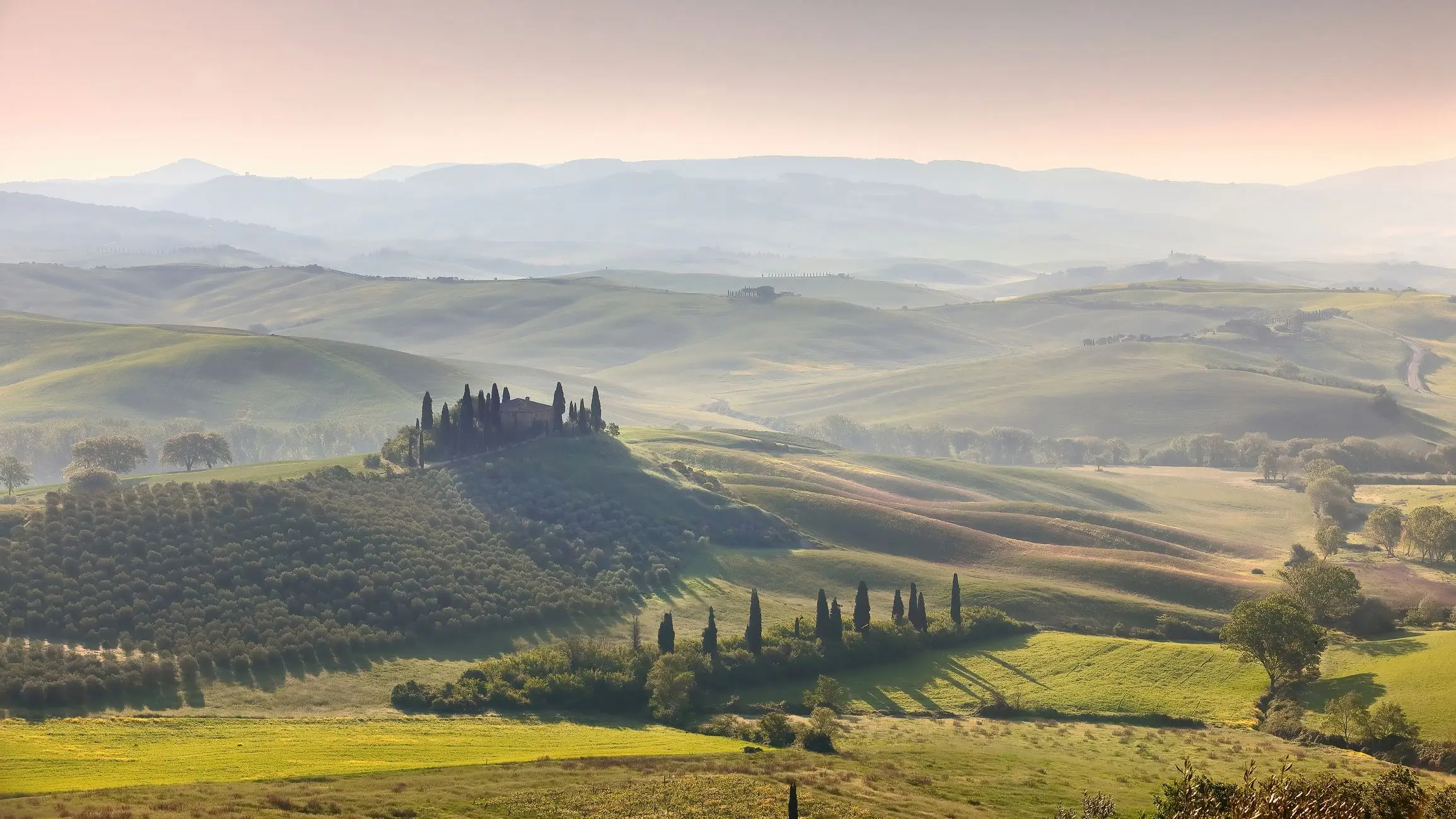
5. Pienza
Pienza used to be one of the lesser-known places to visit in Tuscany, but it’s now very popular with tourists. Yet, this hasn’t taken away any of its charm.
This small, Renaissance town is part of Val d’Orcia and was reconstructed by Pope Pius II during the 15th century as a model of urban harmony.
Bernardo Rossellino was assigned the task of redesigning the main square, Piazza Pio II, in a way that expressed symmetry and balance. This is where you’ll find Pienza Cathedral (Duomo di Santa Maria Assunta) and the Diocesan Museum (Palazzo Borgia).
There are several scenic viewpoints within walking distance of the UNESCO-designated historic center. Palazzo Piccolomini, which housed the Pope’s family, grants the finest perspective of Val d’Orcia.
Besides visiting this lookout during the golden hour, you will also find an iconic film location from Ridley Scott’s Gladiator movie.
Pienza is more famously known as the capital of pecorino cheese. This aged sheep’s milk cheese has a salty, nutty taste and a production dating back to the Etruscans. Pecorino di Pienza is abundant in the town’s restaurants and cheese stores, often prepared as a tasting with Tuscan wines.
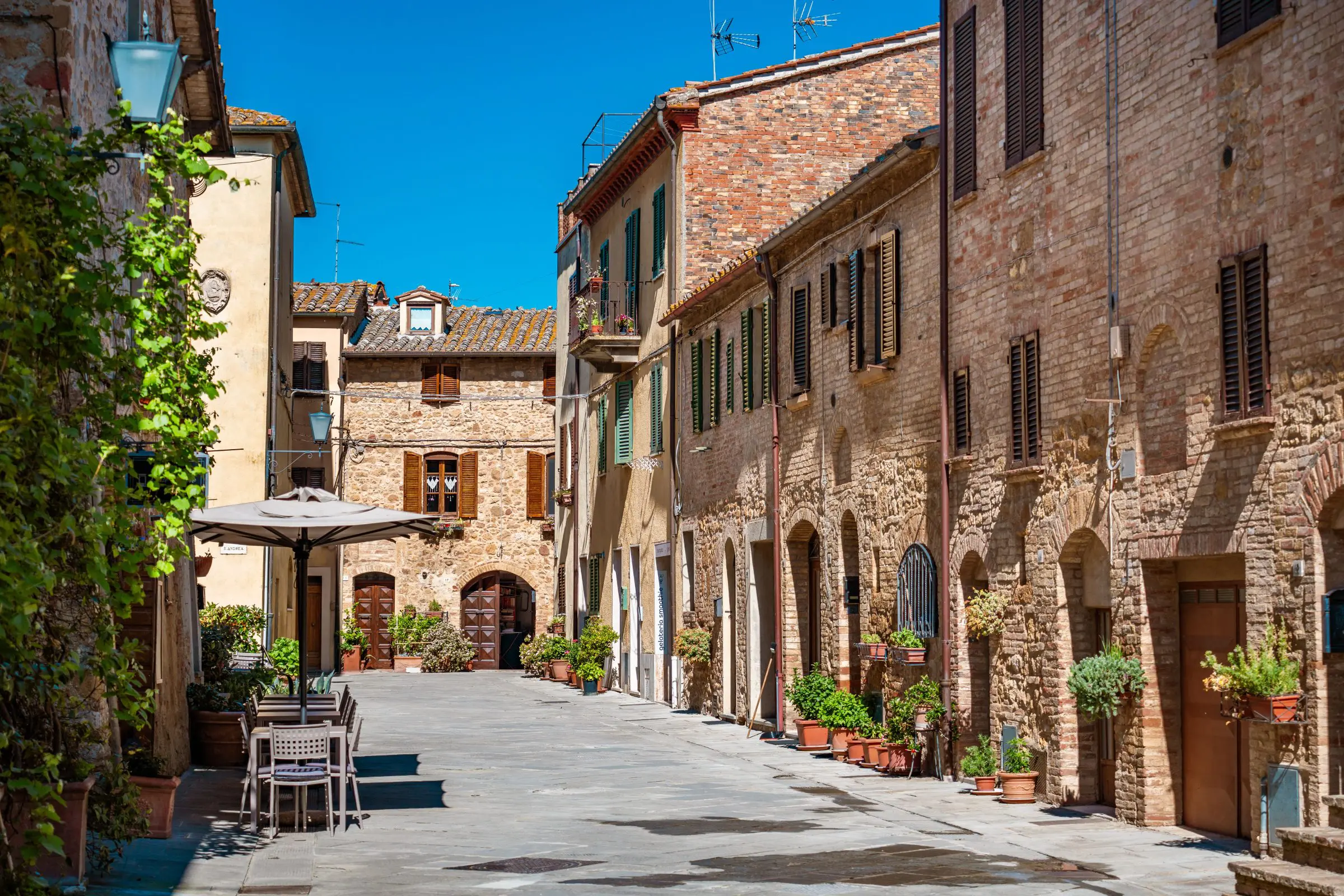
6. Siena
Home to some of Italy’s most beautiful buildings, Siena is one of the must-see places in Tuscany for architecture lovers. Siena Cathedral (Duomo di Siena) is an architectural marvel adorned with intricate marble work and pieces by Pisano, Bernini, and Michelangelo.
Staging the Cathedral and the Baptistery of San Giovanni, Piazza del Campo can compete against any square in Europe.
This is also where the Palio horse race is held every July and August. Riders from the city’s 17 contrade (districts) charge bareback around the shell-shaped piazza with three laps equating to an average contest duration of 90 seconds.
However, the buildup to each race lasts for days as locals anticipate this iconic event. The July 2 Palio is held in honor of the Madonna of Provenzano, while the August 16 Palio commemorates the Assumption of the Virgin Mary.
In terms of what to eat, pici pasta is the dish to seek. This thick, hand-rolled pasta is usually served with a garlic-infused tomato sauce or meat ragu in Siena. Panforte, a nut-based fruitcake with a chewy texture, also hails from Siena. This Sienese treat is available all year, but it comes into its own during the holidays.
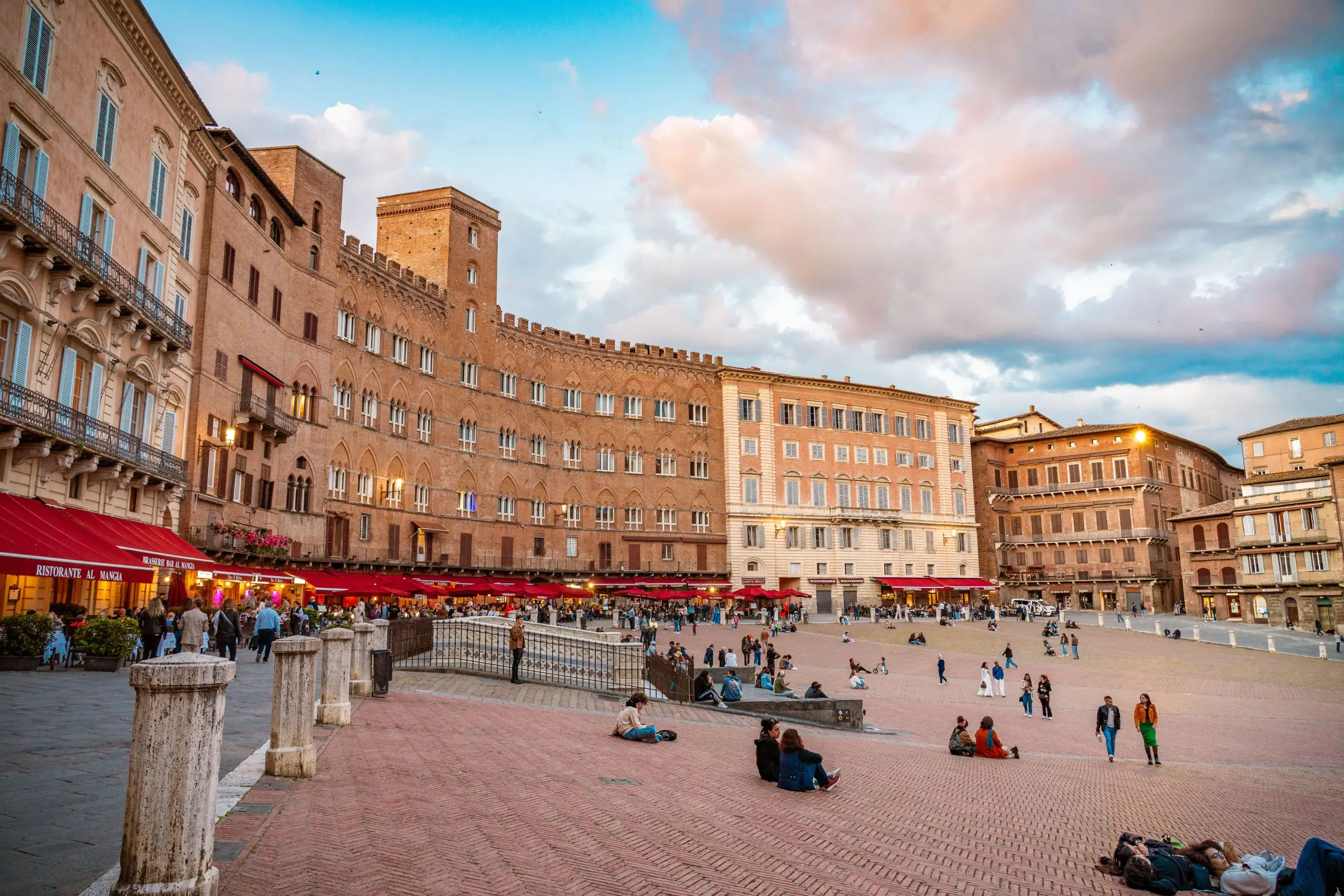
7. Pisa
The iconic Leaning Tower of Pisa (Torre di Pisa) is a global wonder that inspires travelers to take day trips from Florence and Italian cities even further afield every day of the year.
The tower presides over the Square of Miracles (Piazza dei Miracoli) and serves as the campanile of the marbled Cathedral of Santa Maria Assunta.
It might shock you to learn that the tilt was never intentional. In fact, the engineers tasked with its construction went to great lengths to level the tower. The unstable grounds proved too complex to overcome. However, the structure is perfectly safe to climb.
Together with the Cathedral and the Baptistery of San Giovanni, the Square of Miracles is recognised as a UNESCO World Heritage Site.
Also rolled into the site, the Camposanto, a monumental cemetery, marks the northernmost boundary of the square. In terms of views, the old city walls provide the best vantage point of these historic buildings.
Modern-day Pisa remains a student hub, and its ancient university structures, many of which date to the 12th century, are a joy to explore on foot with a gelato.
Piazza dei Cavalieri (Knight’s Square) is a sight to behold, as is the Palazzo della Carovana (Palace of the Elders) for its sgraffito facade. A stay in Pisa may be further complemented by strolls along the riverside, a lap around the botanical gardens, and a wander down Borgo Stretto to see where Galileo Galilei was born.
Those arriving in Pisa by train can check out Keith Haring’s Tuttomondo mural on the walls of the Sant’Antonio Abate Church before diving into the historic center.
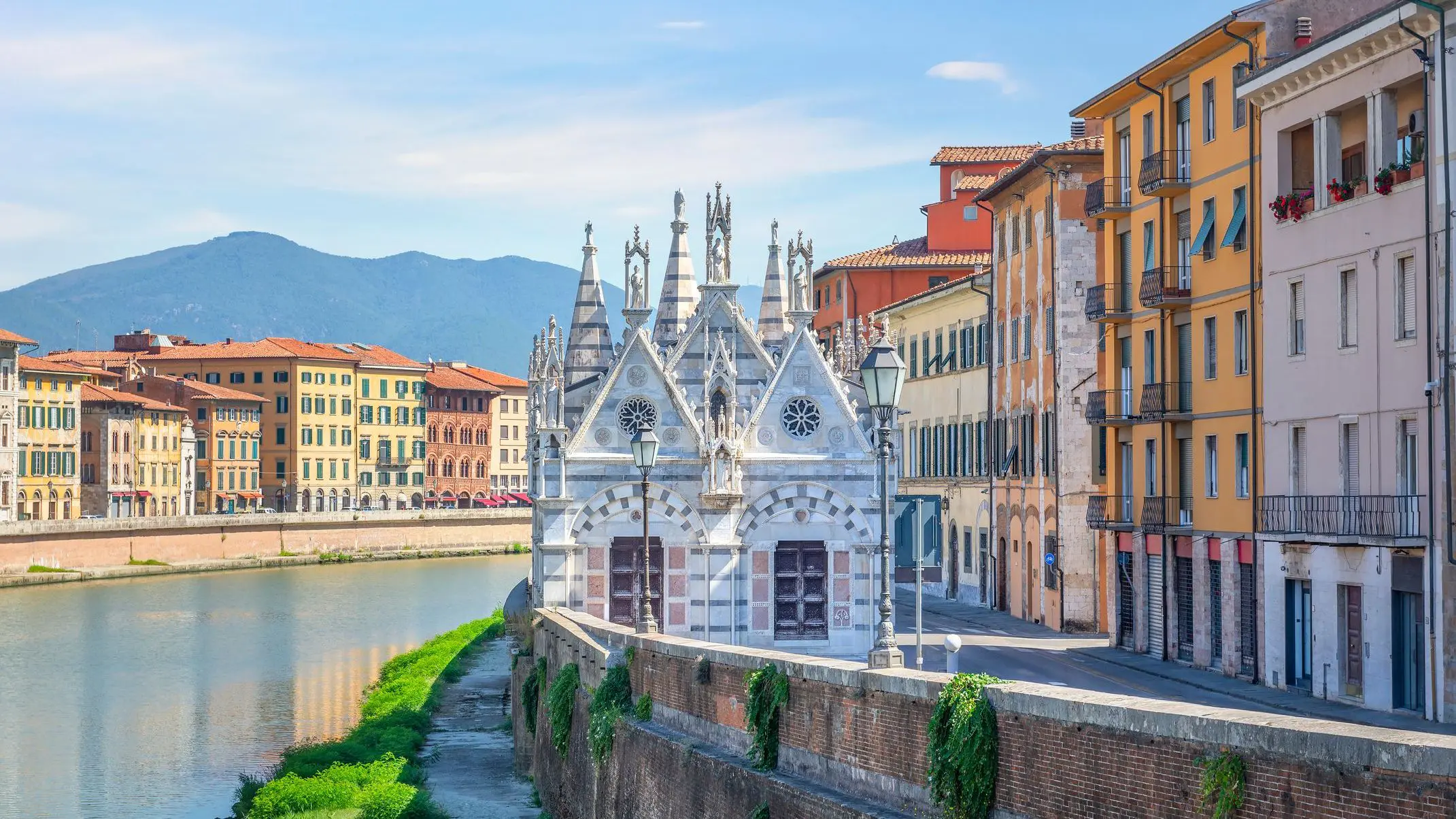
8. San Gimignano
San Gimignano’s skyline of towers earned it the nickname, Medieval Manhattan. At one point, there were 72 towers rising from this hilltop town in the province of Siena. These days, only 14 remain. Torre Grossa is the tallest tower, reaching a height of 178 feet and offering splendid views of the Tuscan scenery.
This UNESCO World Heritage Site fuses Gothic and Romanesque architecture. Piazza della Cisterna marks the town center, which is noted for its triangular shape and its namesake cistern.
Of several churches, the Duomo di San Gimignano (Collegiata di Santa Maria Assunta) is particularly famous for its beautifully preserved frescoes depicting scenes from the Bible. The Church of St Augustine (Chiesa di Sant’Agostino) also has a commendable series of frescoes in honor of the patron saint.
San Gimignano is also recognized for its white wine, Vernaccia di San Gimignano, and its saffron-infused dishes. The spice is prominent in local gastronomy, appearing in risotto, polenta, pasta, and ribollita dishes.
This handsome town may be visited as a day trip from Florence, Pisa, or Siena. However, staying overnight allows time to appreciate the medieval towers under the night sky. There’s a special ambiance in San Gimignano once the day trippers have departed.
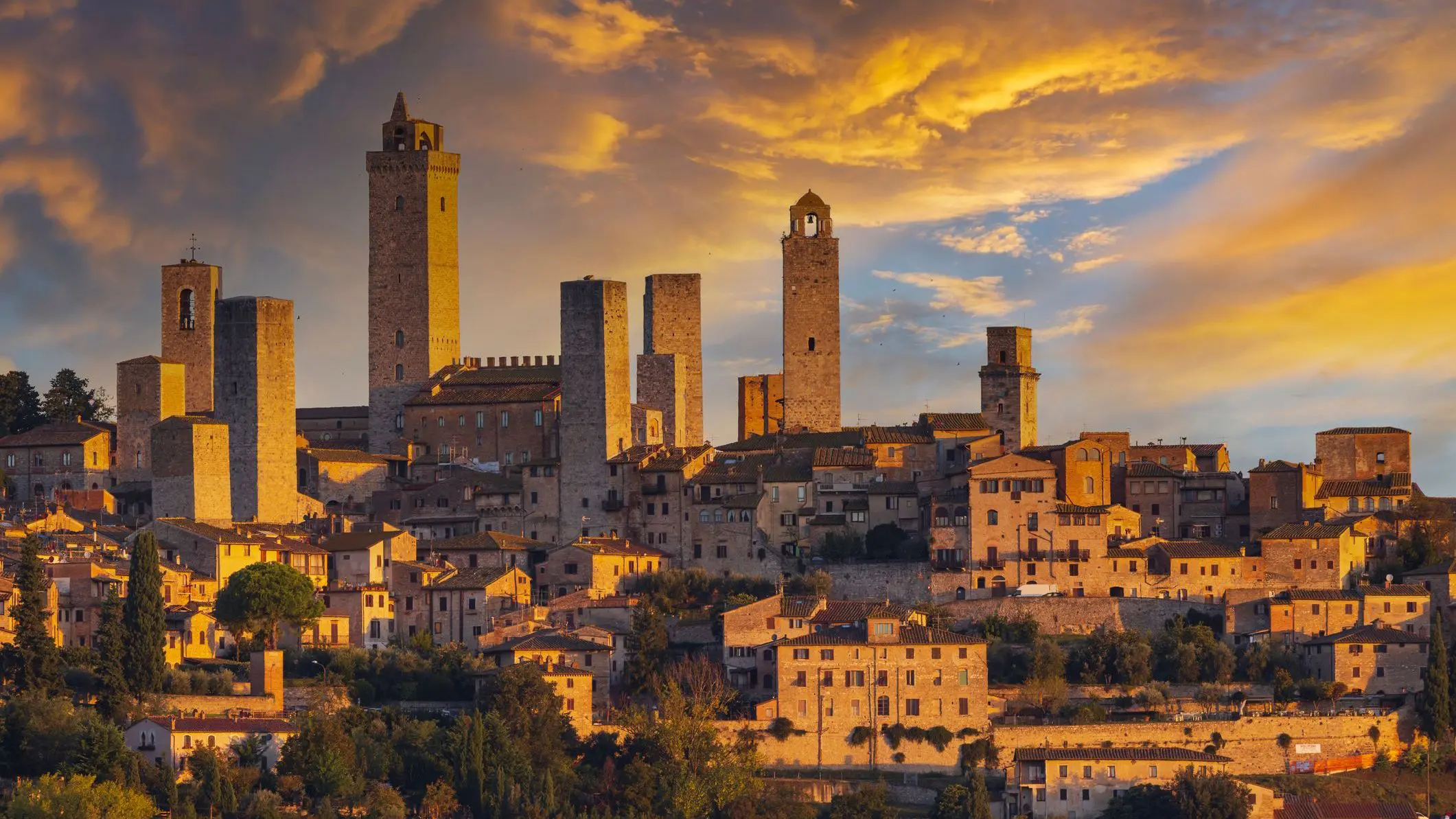
9. Lucca
Lucca is swiftly becoming one of the must-see places in Tuscany, both as a base and as a day trip from Florence.
This historic city is bounded by well-preserved Renaissance-era walls totalling a circumference of around 2.5 miles. These fortifications underwent a transformation during the 19th century when segments were reimaged as public parks and walkways.
Torre Guinigi is considered to offer the best city views. This multi-purpose development continues to be shared today by walkers, runners, cyclists, and children.
The architect behind this project, Lorenzo Nottolini, was also assigned to design Piazza dell’Anfiteatro. This central plaza was built on the site of an Ancient Roman amphitheater.
As the birthplace of composer Giacomo Puccini, Lucca is also famous for its musical heritage. His former home is now a museum.
The city’s relaxed atmosphere, artisan shops, and pleasant cafés make it an ideal destination for a mix of tourism pursuits and soaking up the ambiance of a modern Tuscan city.
As trains between Florence and Lucca pass through Pisa, many travelers opt to stop off along the way and pay a quick visit to the leaning tower. This is a suitable option for those who are short on time. However, it is advisable to reserve accommodation in one of the two cities.
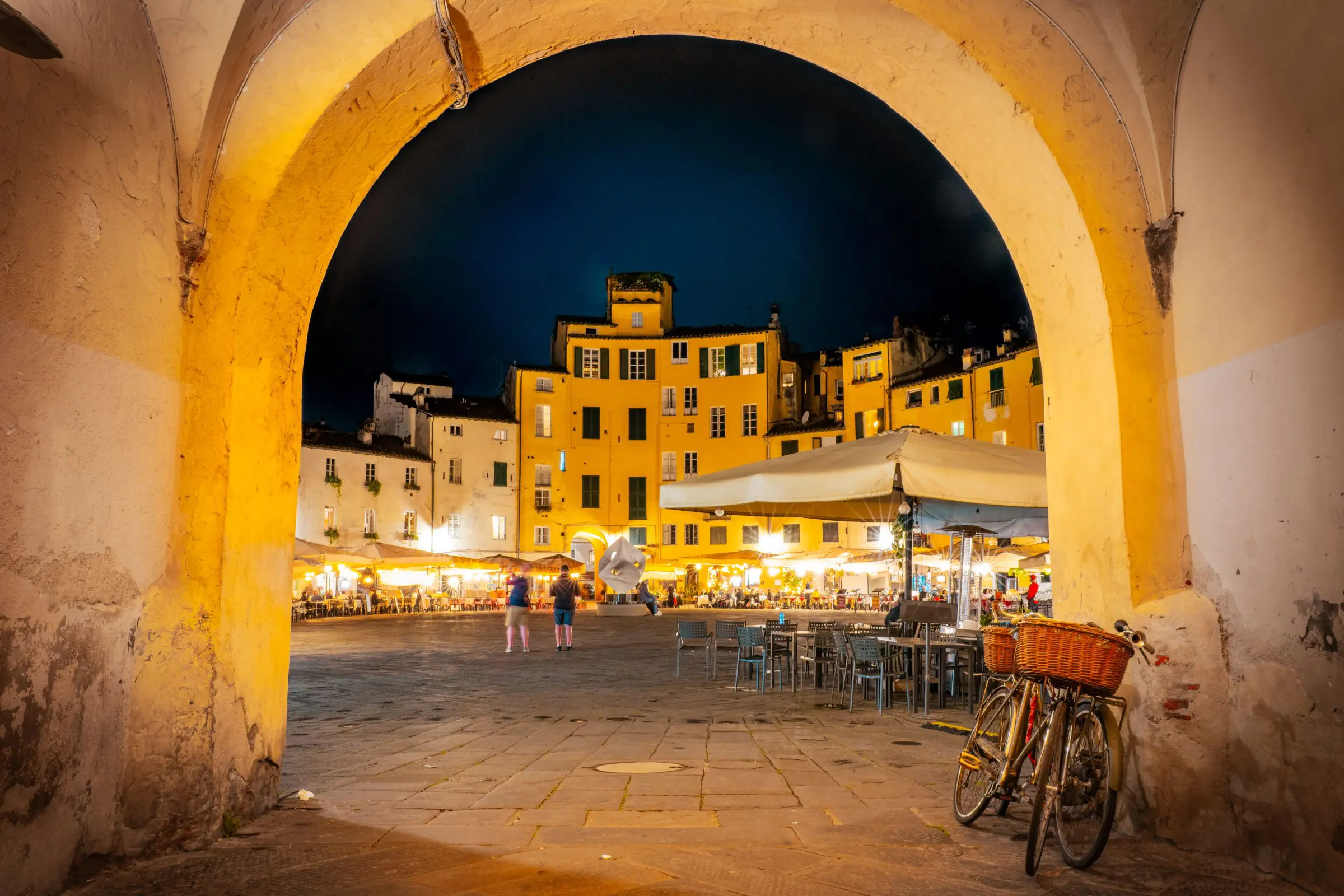
10. Montepulciano
Perched on a ridge overlooking rolling vineyards, Montepulciano joins Chianti as one of the must-visit places in Tuscany for wine lovers. This hilltop medieval town is behind the craftsmanship of Vino Nobile di Montepulciano, one of Tuscany’s most prestigious red wines.
Confusingly, this wine is made with the same Sangiovese grapes present in Chianti, rather than the Montepulciano grapes found further south.
The production of Vino Nobile using Sangiovese grapes has its roots in the Etruscan era. This is a structured red wine with notes of cherry, plum, and earthy spices, typically aged for two to three years.
Historic wine cellars are carved into the rocks beneath the town, with tastings on almost every corner. These are usually paired with pecorino cheese or served alongside mountains of thick pici pasta in restaurants.
Montepulciano’s architectural highlights include Piazza Grande, dominated by the Palazzo Comunale and the majestic Cathedral of Santa Maria Assunta. Beyond its wine culture, Montepulciano stuns with its panoramic views of Val d’Orcia and Val di Chiana.
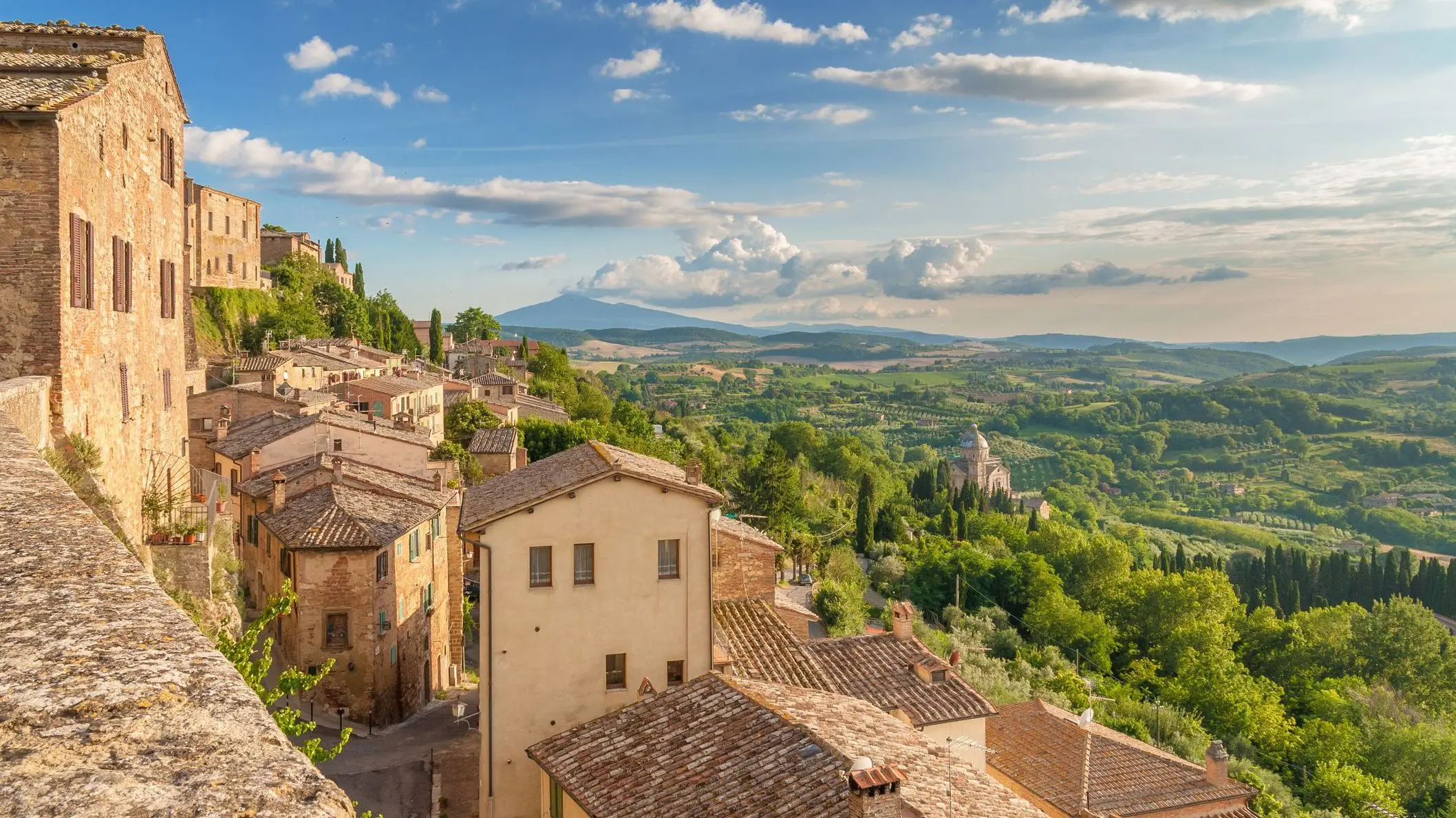
11. Montalcino
Montalcino is another medieval hilltop town associated with Tuscany’s revered wine-making heritage. The vineyards around this medieval settlement produce Brunello di Montalcino, another of Italy’s most esteemed red wines.
Rising above Val d’Orcia, Montalcino offers panoramic views of vineyards, olive groves, and rolling hills. Naturally, these landscapes are only enhanced when paired with a glass of red from a local enoteca.
The dormant volcano Mount Amiata and the varying elevations of the valley provide a microclimate advantageous to wine production.
Although viticulture in the Montalcino area is traced back to the Etruscans and Romans, Brunello is a relatively young wine for Italy. In 1980, it became one of Italy’s first DOCG wines. It has since become a benchmark for Italian fine wine, often compared with varietals from Bordeaux.
The 14th-century Montalcino Fortress (Fortezza di Montalcino) marks the heart of town and makes an imposing statement. The fortification conveniently has an enoteca on site where you can order a glass of Brunello to savor with the city’s best viewpoint.
Other highlights of Montalcino include the Museo Civico e Diocesano, which houses Renaissance art, and the nearby Abbazia di Sant’Antimo. This is a serene Romanesque abbey where Gregorian chants are sung on a regular basis.
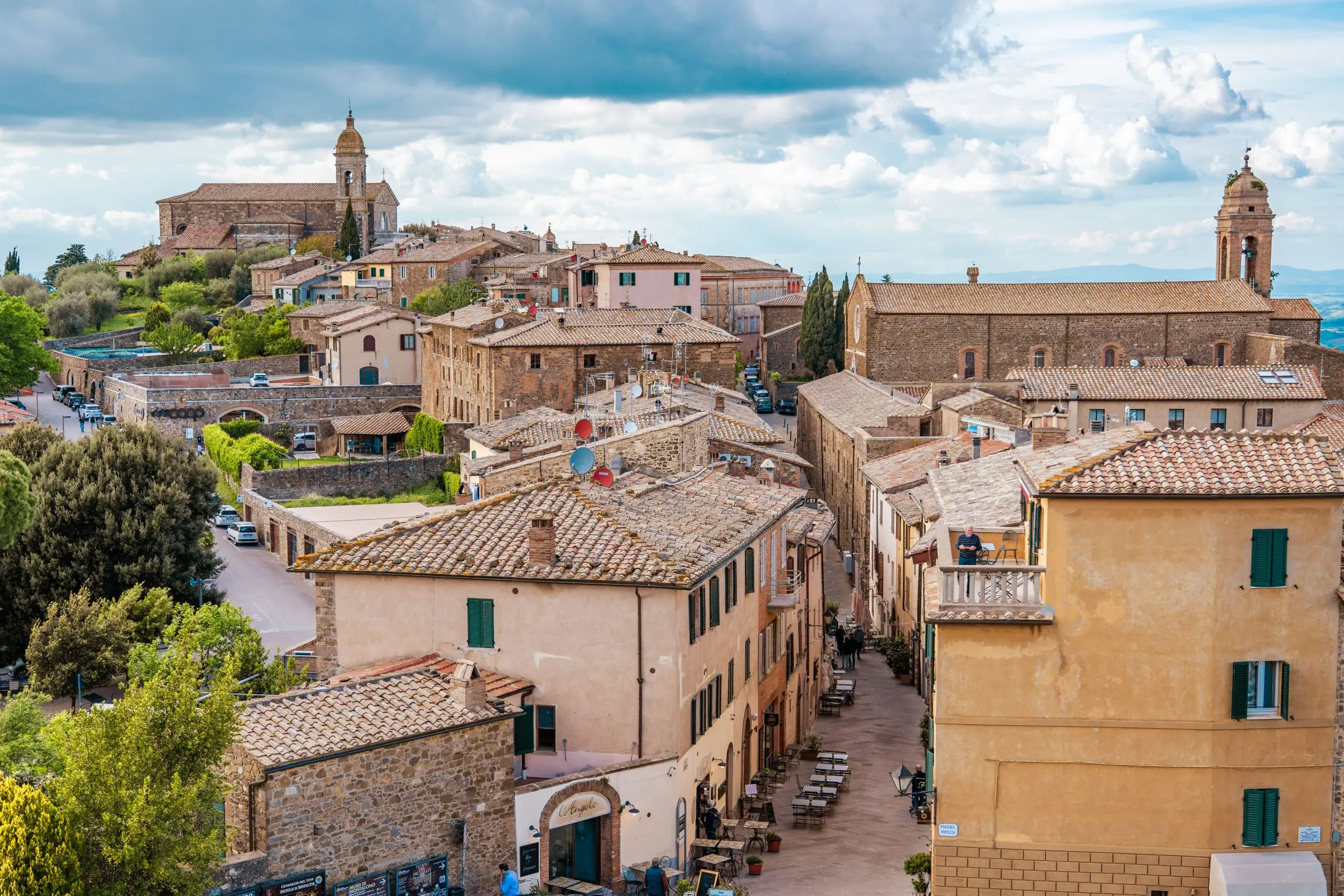
12. Elba Island
Elba is the largest island in the Tuscan Archipelago. The island is cherished for its crystal-clear waters and rugged coastline with a mix of sandy and pebbly beaches.
Spiaggia di Cavoli is one of the best options for a sandy beach session, whereas Capo Bianco turns heads with its chalky white cliffs. Besides swimming and snorkeling, Elba offers opportunities for sailing, diving, and kayaking, as well as hiking along scenic trails, such as those in Monte Capanne.
The island is also steeped in history, known as the place of Napoleon Bonaparte’s exile in 1814. His residences at Villa dei Mulini and Villa San Martino are now open to the public for tours.
Pretty seaside spots like Portoferraio and Marciana Marina offer charming harbors overlooked by seafood restaurants and souvenir shops. As with the mainland, Elba is also known for its excellent wines and traditional local cuisine with an island twist; you’ll struggle to find fresher fish and seafood in Tuscany.
Year-round ferries to the island of Elba depart from Piombino and take between 30 and 60 minutes to reach the island, subject to the operator and weather conditions.

13. Cortona
Resting high above Val di Chiana, Cortona is one of the oldest Tuscan towns with roots tracing back to the Etruscans, when it was one of the 12 main settlements of this ancient civilization.
As is fairly standard for the region, a hilltop vantage point offers sweeping views of the surrounding meadows, vineyards, and olive groves.
Cortona’s atmospheric, narrow streets are filled with Renaissance architecture and cozy trattorias where it’s easy to spend an afternoon.
Major sights include Piazza della Repubblica and the Basilica di Santa Margherita. The Accademia Etrusca (MAEC) houses ancient artifacts that illustrate regional and local history. Portions of the original Etruscan walls remain.
Cortona went on to flourish under the Medicis and produced the fresco artist, Luca Signorelli. The town became famous after the publication of the book (and subsequent film adaptation) Under the Tuscan Sun.
The area around Cortona is gaining a reputation for its DOC Syrah, an unusual grape for Tuscany, which thrives in this region.
Other wineries focus on the more traditional Sangiovese-based reds, and the setting for a wine tasting is nothing but idyllic. Apart from the beloved pici pasta of Tuscany, look out for wild boar stew on menus at restaurants.
Summer is the best time to visit Cortona due to such festivals as Giostra dell’Archidado (a medieval crossbow event) and the Tuscan Sun Festival, which is inspired by the bestselling novel.
Cortona is garnering more international attention, yet this town remains relatively peaceful as a vacation base away from the larger cities.
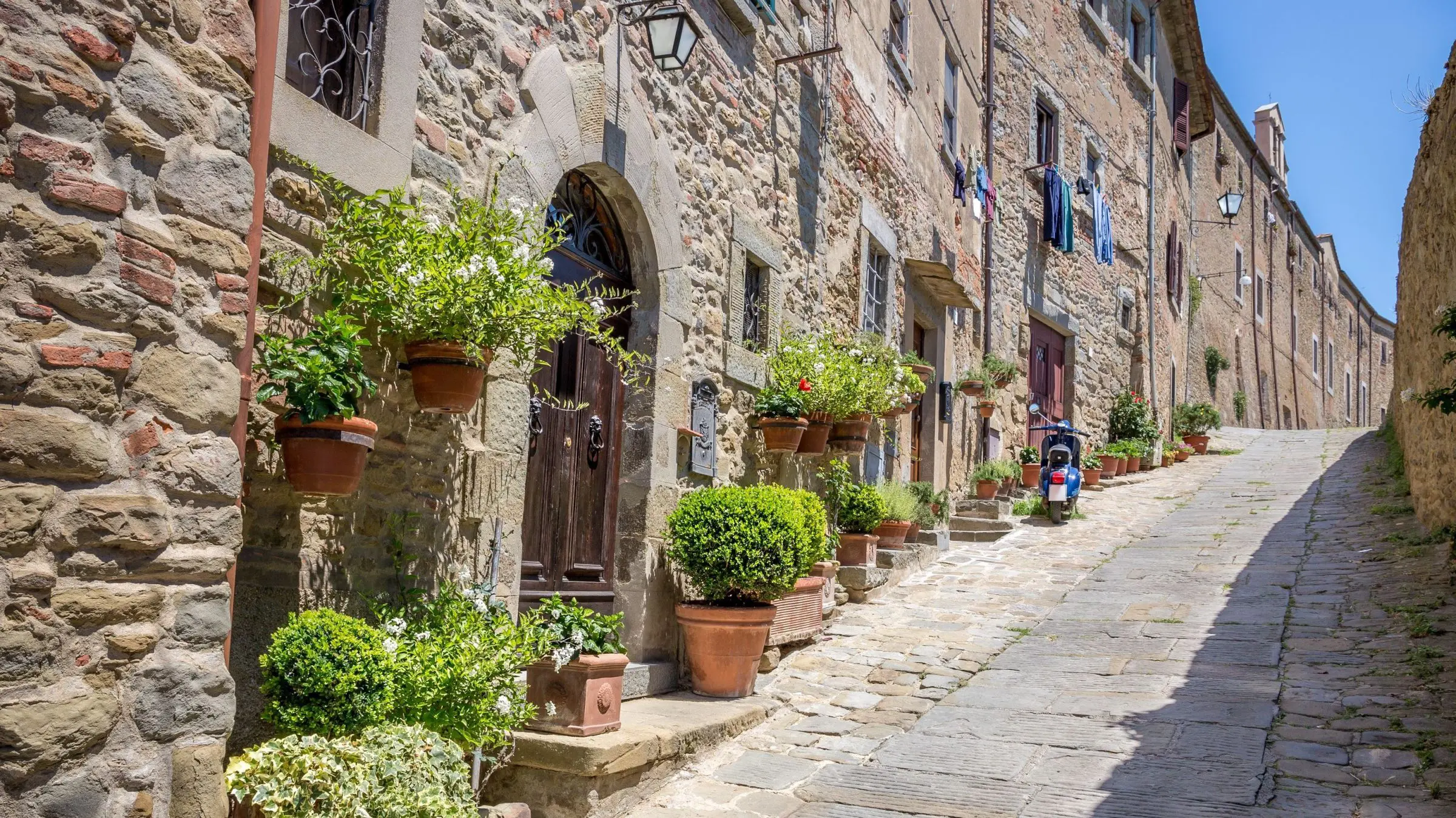
14. Saturnia
Saturnia is the best place to visit in Tuscany for natural thermal baths and spa culture. This small town was named after Saturn, the Roman God of Agriculture, Harvest and Time, who was attributed to creating these mineral springs with his thunderbolt.
The area was first settled by the Etruscans and developed by the Romans. Both civilizations bathed in the sulfur-rich waters. Cascate del Mulino is a natural waterfall system on the outskirts of the town where water tops out at 98°F (37°C).
These falls cascade down limestone terraces into natural basins, which are open all year, around the clock, and carry no admission charge. This extends into the gentler Cascate del Gorello, which has a higher quantity of pools.
Back in town, the Terme di Saturnia Spa and Golf Resort offers a luxurious hot springs experience with the addition of wellness treatments.
Piazza Vittorio Veneto and its supply of restaurants and cafés stand in the center of the town. As Saturnia sits within the Morellino di Scansano DOCG wine zone, you’ll find locally made Sangiovese-based reds that pair beautifully with the local specialty of wild boar (cinghiale).
Remnants of the town’s ancient fortifications are still standing, as are parts of Via Clodia, which connects Tuscany with Rome.
Although Saturnia is known for its natural hot springs, the southern region of Maremma is not overly trafficked. Staying in Saturnia provides a restful and rejuvenating experience as part of a wider Italian itinerary.

15. Livorno
As Tuscany’s main seaport, Livorno offers a fascinating blend of maritime history and seaside charm. The city is somewhat overshadowed by Florence, Pisa, and Siena.
However, it has an excellent infrastructure for a base on the Tuscan coast. It’s also a shockingly attractive city, touted as Little Venice for its network of canals in the Quartiere Venezia (Venice District), which you can explore on a boat ride. The Venice District is guarded by two fortresses: Fortezza Vecchia and Fortezza Nuova.
Nearby, Mercato Centrale is understood to be one of Italy’s largest covered markets. This is a great place to try such specialities as the Cinque e Cinque (a sandwich made with chickpea flatbread and fried eggplant), and cacciucco (fish stew).
As a port city, Livorno has a fantastic supply of seafood dishes that pair perfectly with the crisp white wines produced in this part of Tuscany.
Beyond its lively port, Terrazza Mascagni is a scenic seaside promenade ideal for experiencing la passeggiata, the Italian pastime of taking an evening stroll.
Livorno may be used as the perfect base before exploring the Tuscan Archipelago or for taking day trips to the surrounding area, which is abundant in beautiful beaches and resorts.
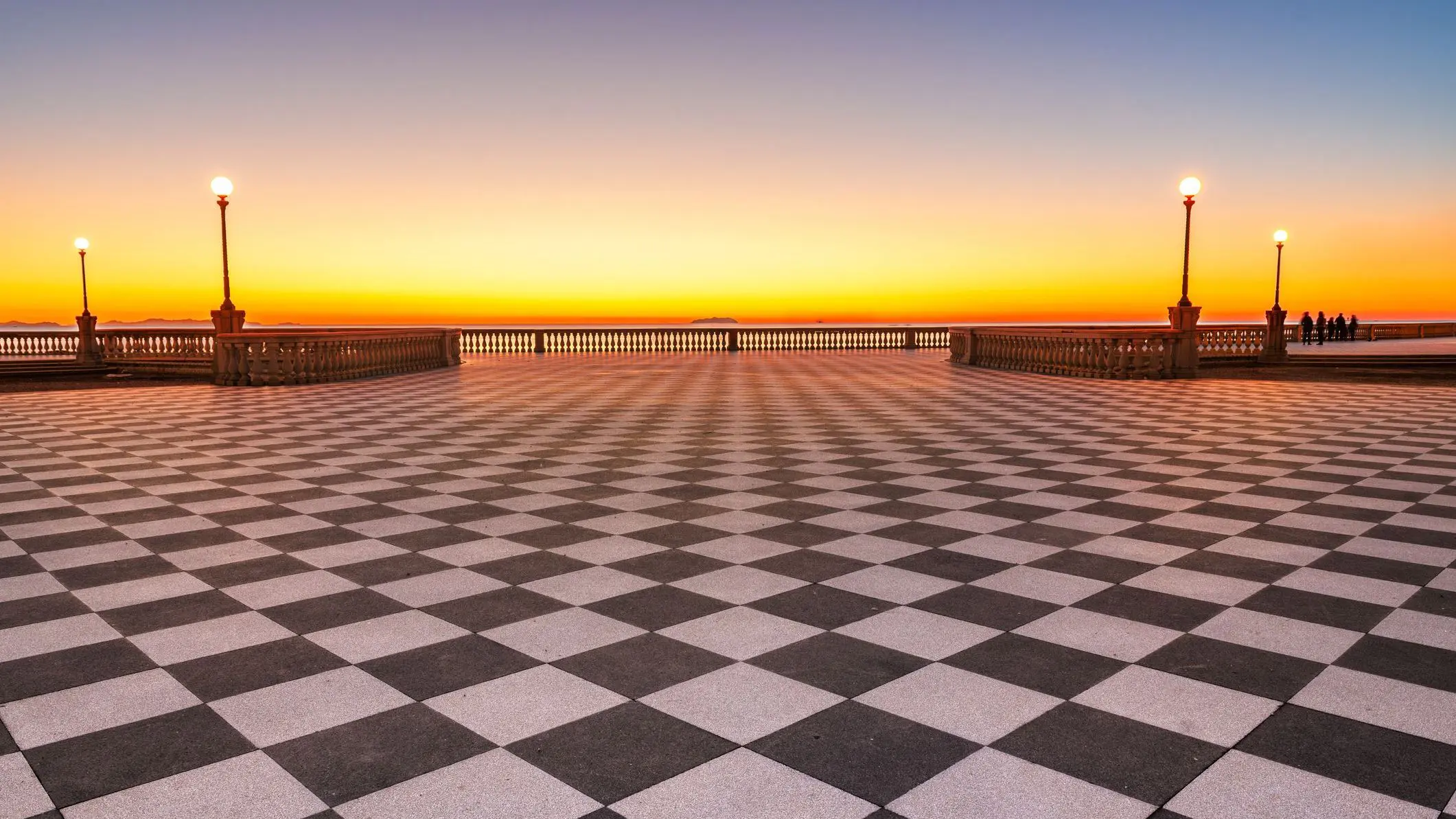
Discover The Best Places in Tuscany With JayWay
We hope you enjoyed reading about these 15 must-see places in Tuscany, and we’re sure that you’re now eager to explore this gorgeous Italian region. If so, we’ve got your back.
Our expert trip planners can’t wait to craft the perfect Italy itinerary for you, sprinkling your next trip with their recommendations on the best things to see and do in Tuscany.

Born and raised in Athens, Maria’s passionate about travel and storytelling, a combination that makes her ideal for her role as our content manager.



